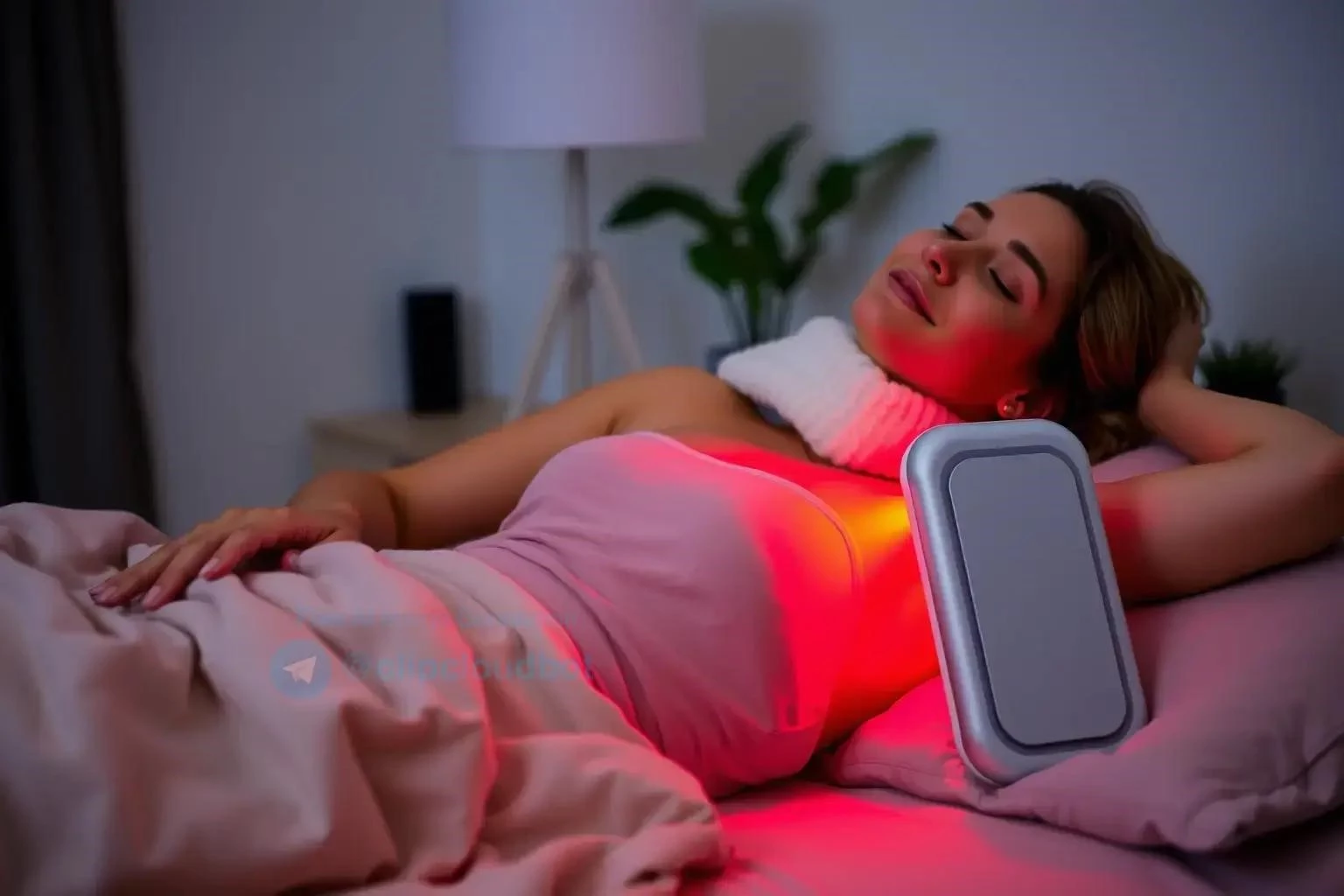Red Light Therapy: A Comprehensive Guide
Red light therapy, also known as photobiomodulation, is a non-invasive treatment using red and near-infrared light․ This therapy has shown promise in various applications, from skincare to pain relief․ Explore this guide to understand the science, benefits, and practical uses of red light therapy․
Benefits of Red Light Therapy (Photobiomodulation)
Red light therapy, or photobiomodulation, offers a wide range of potential benefits based on its interaction with cellular processes․ It works by delivering specific wavelengths of red and near-infrared light to the body’s tissues, stimulating cellular activity and promoting various physiological responses․ While research is ongoing, numerous studies suggest potential advantages across diverse areas of health and wellness․
One of the most well-studied benefits is its effect on skin health․ Red light therapy can stimulate collagen production, a crucial protein for maintaining skin elasticity and reducing the appearance of wrinkles and fine lines․ It may also contribute to improved skin tone and texture, potentially minimizing blemishes and promoting a more youthful complexion․ Furthermore, red light therapy has shown promise in reducing inflammation and redness associated with skin conditions like acne and rosacea․
Beyond skincare, red light therapy has demonstrated potential in pain management and tissue repair․ The therapy’s ability to reduce inflammation can alleviate pain associated with conditions like arthritis and muscle soreness․ Moreover, it may promote faster healing of wounds and injuries by increasing blood flow and stimulating cellular regeneration in the affected areas․ Athletes and individuals recovering from injuries might find red light therapy beneficial in supporting the recovery process and reducing downtime․
Emerging research also suggests potential benefits for cognitive function and mental well-being․ Some studies indicate that red light therapy could enhance cognitive performance and improve mood; While more research is needed in this area, preliminary findings suggest a promising role for red light therapy in supporting brain health․
At-Home Red Light Therapy for Skin Rejuvenation
At-home red light therapy devices have become increasingly popular for skin rejuvenation, offering a convenient and accessible way to harness the potential benefits of photobiomodulation․ These devices typically utilize LED lights emitting specific wavelengths of red and near-infrared light, designed to target skin cells and stimulate collagen production․ Incorporating red light therapy into your skincare routine can offer several advantages for improving skin tone, texture, and overall appearance․
One of the primary benefits of at-home red light therapy is its ability to reduce the appearance of wrinkles and fine lines․ By stimulating collagen synthesis, the therapy can help improve skin elasticity and firmness, minimizing the visible signs of aging․ Furthermore, red light therapy may contribute to a more even skin tone by reducing redness and inflammation, potentially addressing concerns like rosacea and acne scars․ Regular use can lead to a brighter, more youthful complexion․
Using at-home red light therapy devices is generally straightforward and convenient․ Most devices are designed for easy application to the face and other areas of the body․ Treatment sessions typically last between 10 and 20 minutes, allowing for seamless integration into your daily skincare routine․ It’s important to follow the manufacturer’s instructions carefully to ensure safe and effective use․ Consistency is key when using at-home red light therapy devices, and visible results may take several weeks or months of regular treatments․
When choosing an at-home red light therapy device, consider factors such as the device’s wavelength, power output, and treatment area․ Look for devices that emit wavelengths within the optimal range for skin rejuvenation (typically between 660nm and 850nm)․ Ensure the device is FDA-cleared and adheres to safety standards․ Reading reviews and comparing different models can help you select a device that suits your individual needs and budget․ Consult with a dermatologist for personalized recommendations and to address any specific skin concerns․
Using Red Light for Sleep Enhancement and Muscle Recovery
Red light therapy is gaining recognition for its potential benefits beyond skincare, including sleep enhancement and muscle recovery․ The therapy’s influence on melatonin production and cellular function may contribute to improved sleep quality and faster recovery from physical exertion․ While research is ongoing, preliminary findings suggest promising applications for those seeking natural ways to enhance sleep and optimize physical performance․
For sleep enhancement, red light therapy is thought to work by influencing the body’s natural circadian rhythm․ Exposure to red light in the evening can suppress melatonin production, helping to regulate sleep-wake cycles and promote more restful sleep․ This can be particularly beneficial for individuals experiencing sleep disturbances or those struggling to adjust to shift work․ Incorporating red light therapy into a consistent evening routine may contribute to improved sleep quality and duration․
In the realm of muscle recovery, red light therapy may help reduce inflammation and promote tissue repair․ By increasing blood flow and stimulating cellular activity, the therapy can accelerate the healing process after intense exercise or injury․ Athletes and fitness enthusiasts might find red light therapy beneficial in reducing muscle soreness, improving recovery time, and enhancing overall physical performance; It’s important to note that the optimal parameters for using red light therapy for muscle recovery are still being investigated․
While the exact mechanisms underlying these benefits are still being explored, the potential of red light therapy for sleep enhancement and muscle recovery is promising․ As research continues to unfold, it’s crucial to consult with healthcare professionals for personalized guidance on incorporating red light therapy into your wellness routine․ Combining red light therapy with other healthy lifestyle practices, such as regular exercise and a balanced diet, can further optimize its potential benefits for overall well-being․
Portable Red Light Therapy Devices: Options and Considerations
Portable red light therapy devices offer a convenient and flexible way to incorporate this promising therapy into your wellness routine․ With a variety of options available, choosing the right device requires careful consideration of factors like wavelength, power output, treatment area, and budget․ Understanding these key features can help you make an informed decision and maximize the benefits of red light therapy․
Wavelength is a crucial factor to consider, as different wavelengths penetrate the skin and tissues to varying depths․ Red light typically falls within the 630-700nm range, while near-infrared light ranges from 700-900nm․ Devices offering a combination of red and near-infrared wavelengths can provide a broader range of therapeutic benefits․ Consider your specific needs and target areas when selecting a device with the appropriate wavelength combination․
Power output, measured in milliwatts (mW), determines the intensity of the light emitted by the device․ Higher power output generally translates to faster treatment times․ However, it’s essential to follow the manufacturer’s recommendations regarding treatment duration and distance from the device to avoid potential adverse effects․ The treatment area covered by the device is another important consideration․ Choose a device with a treatment area appropriate for your target body parts, whether it’s the face, neck, or larger areas like the back or legs․
Budget is also a factor when selecting a portable red light therapy device․ Prices can vary significantly depending on the device’s features, power output, and brand․ Research different models and compare their specifications and user reviews to find a device that fits your budget and meets your specific needs․ Consulting with a healthcare professional can provide valuable insights and personalized recommendations based on your individual health goals and concerns․






